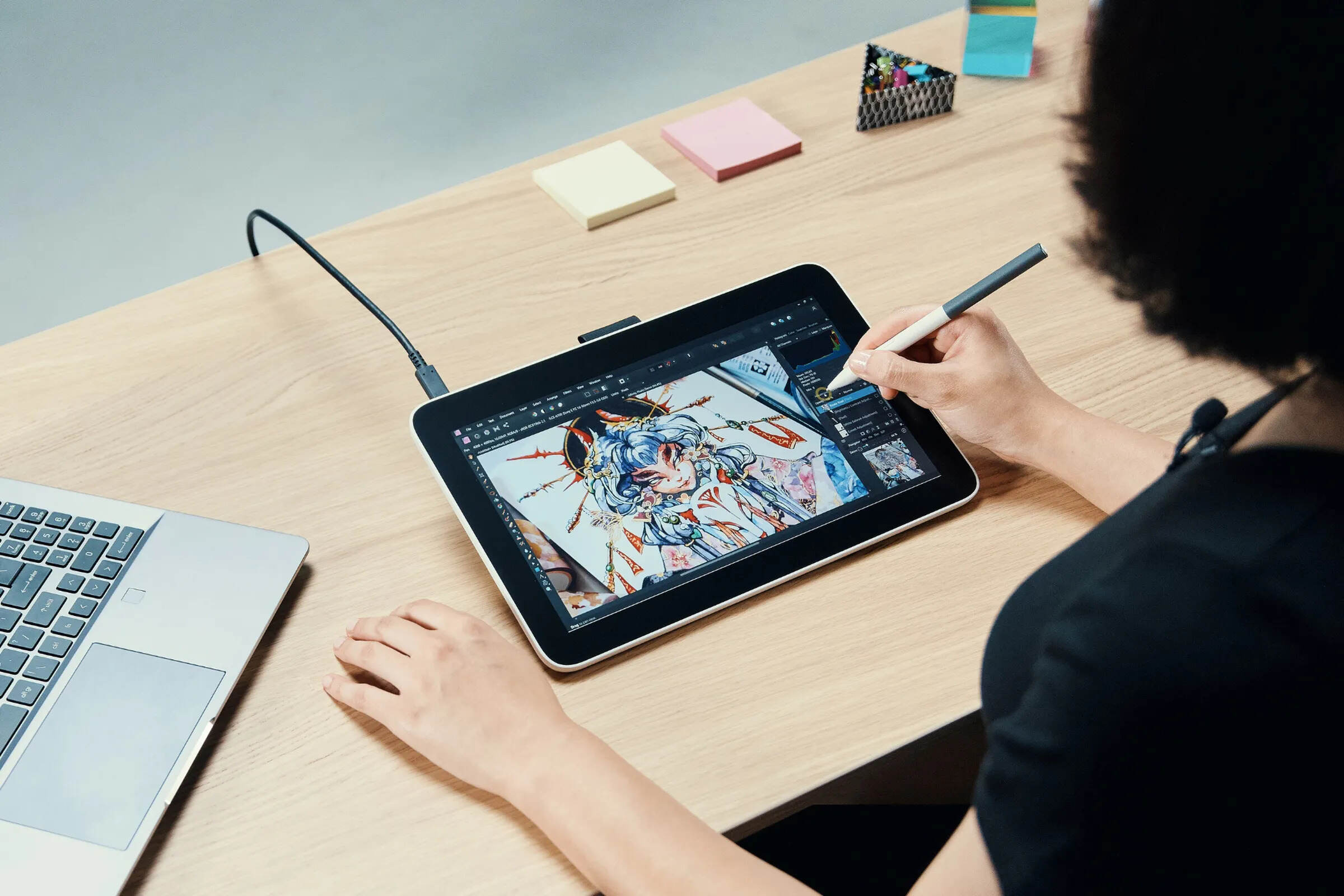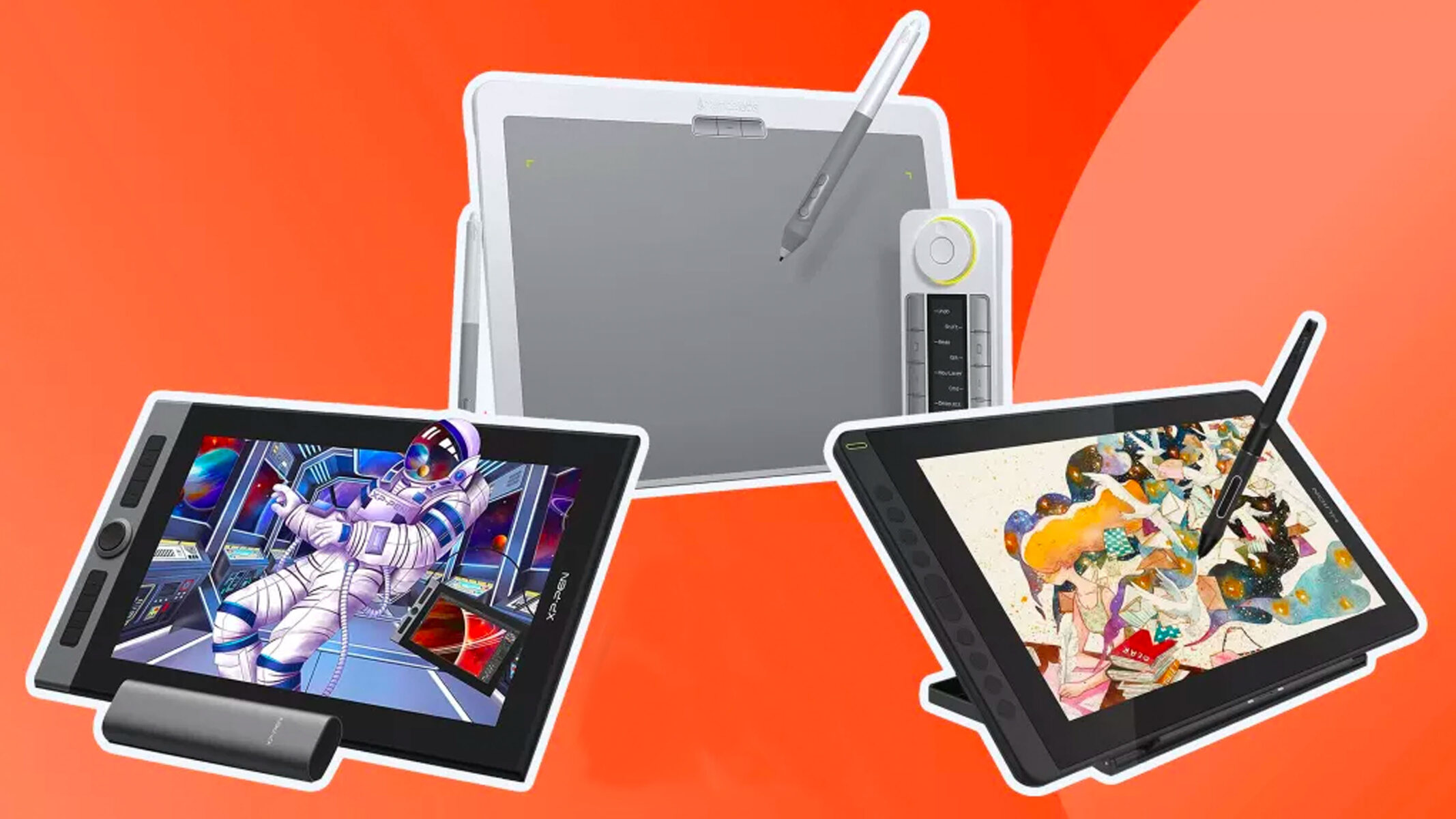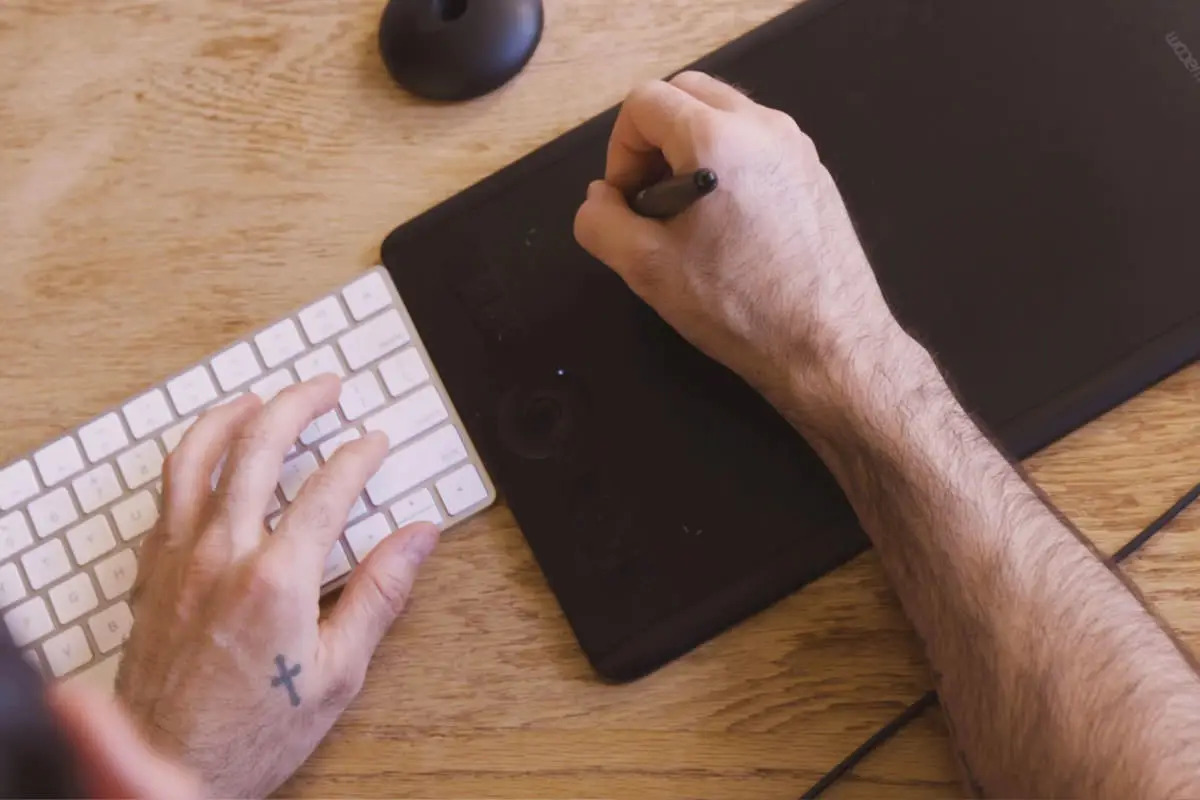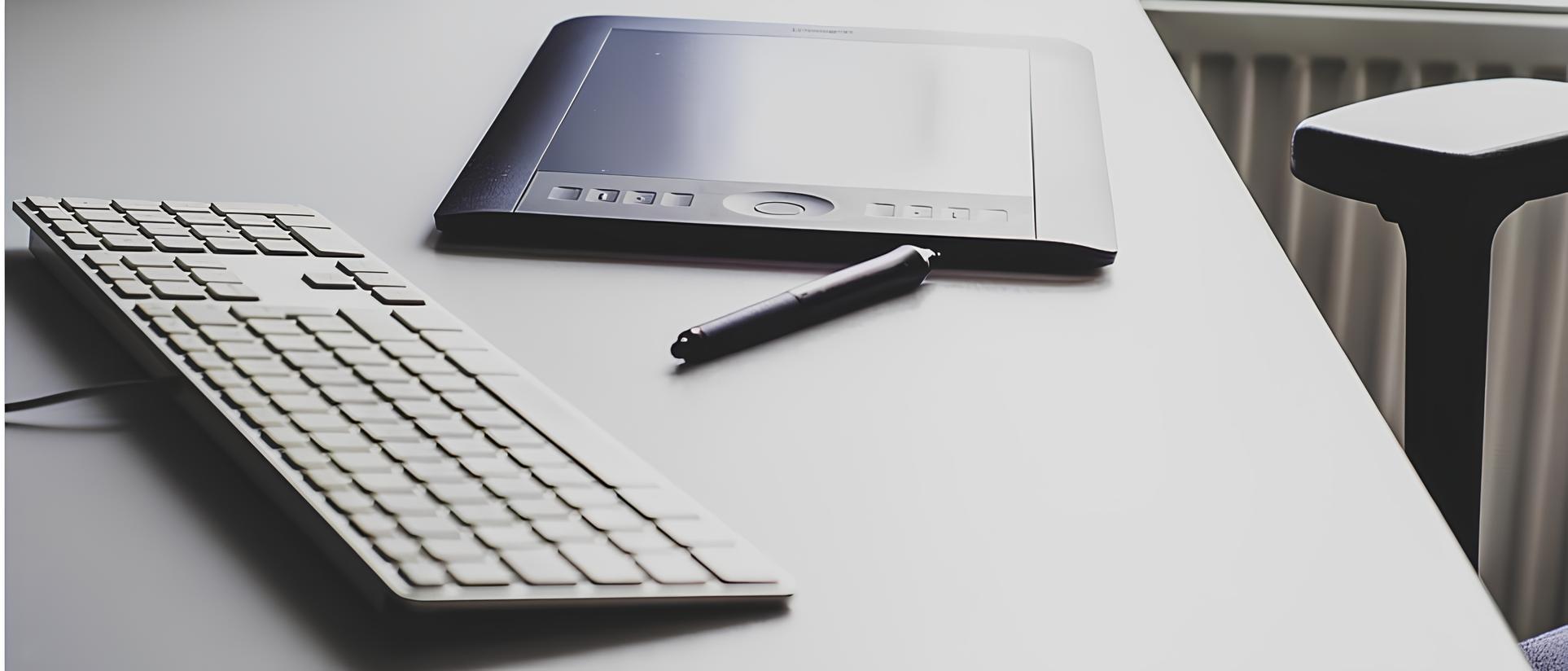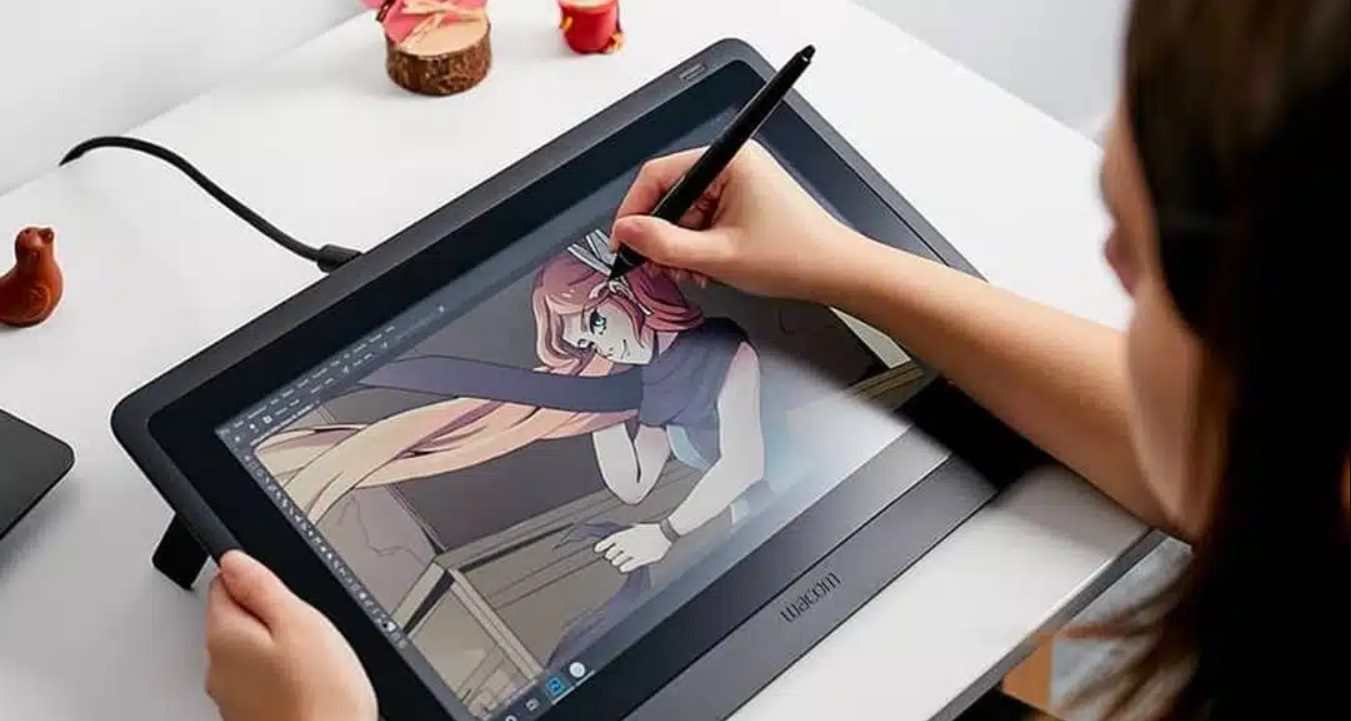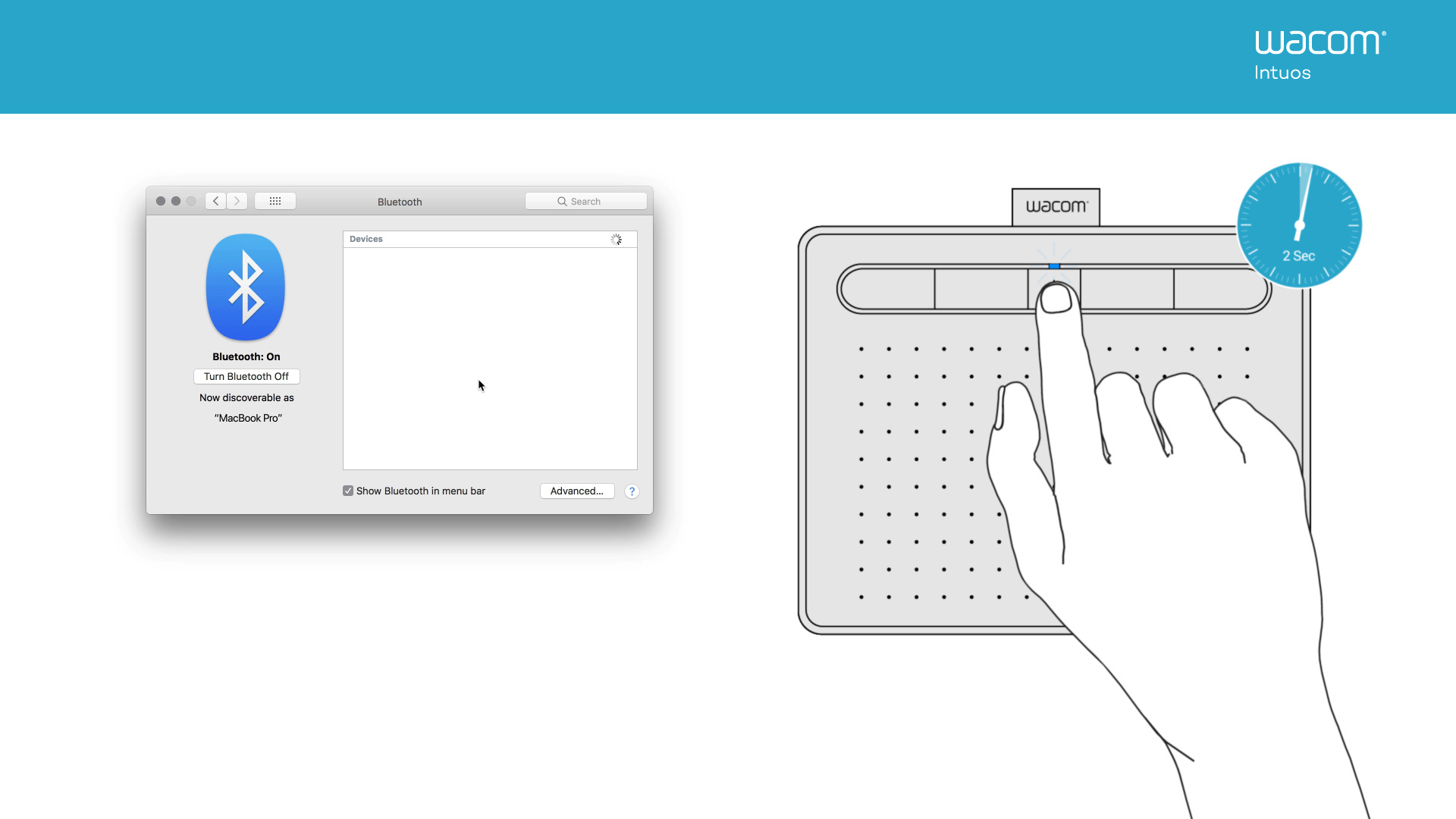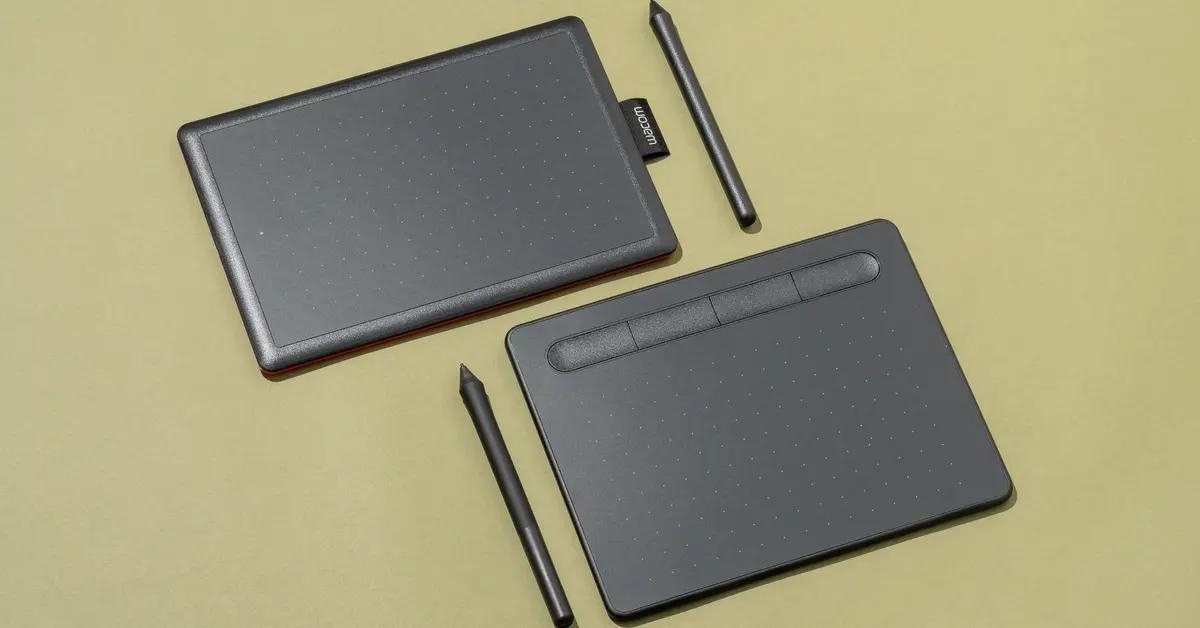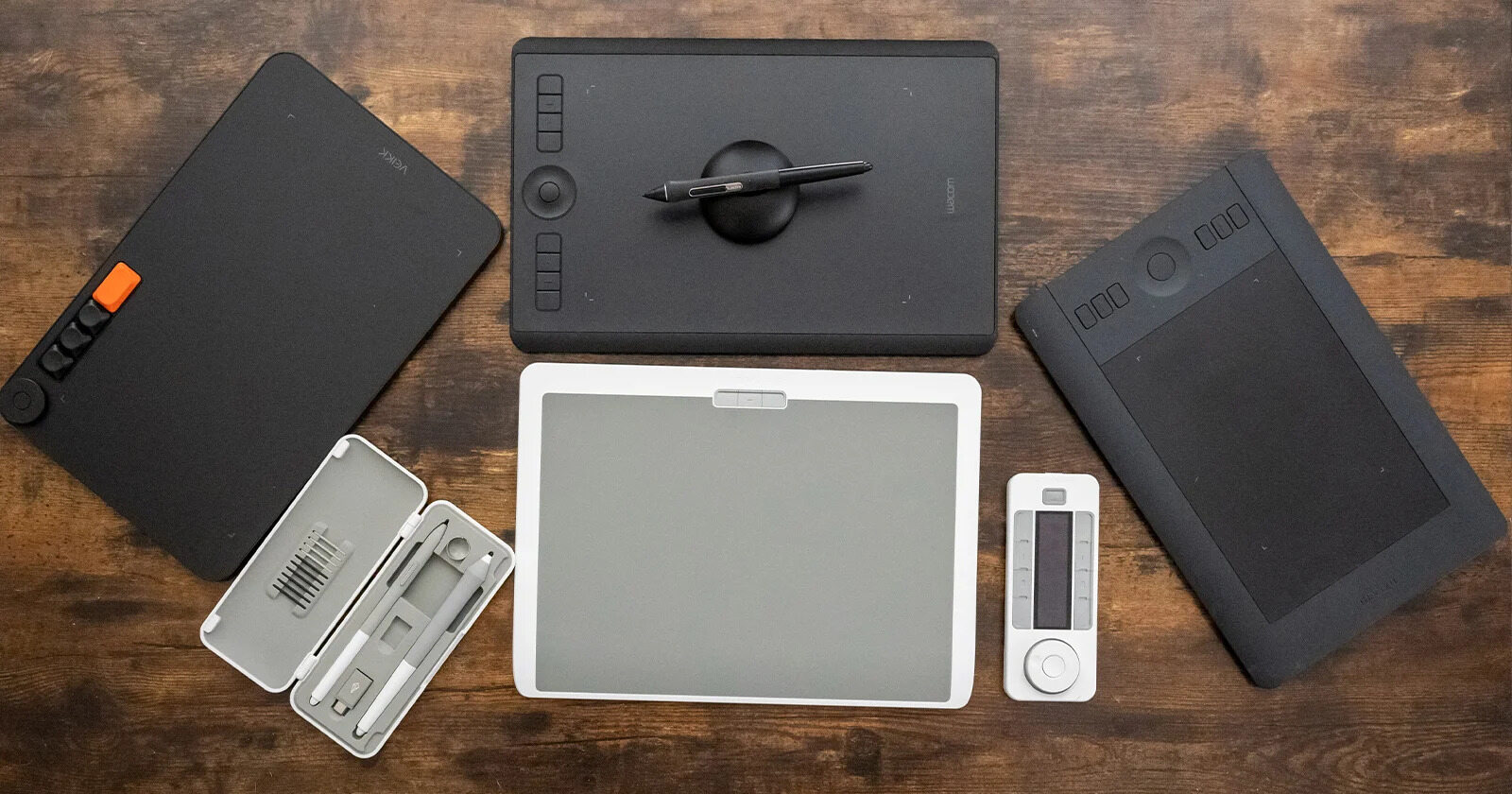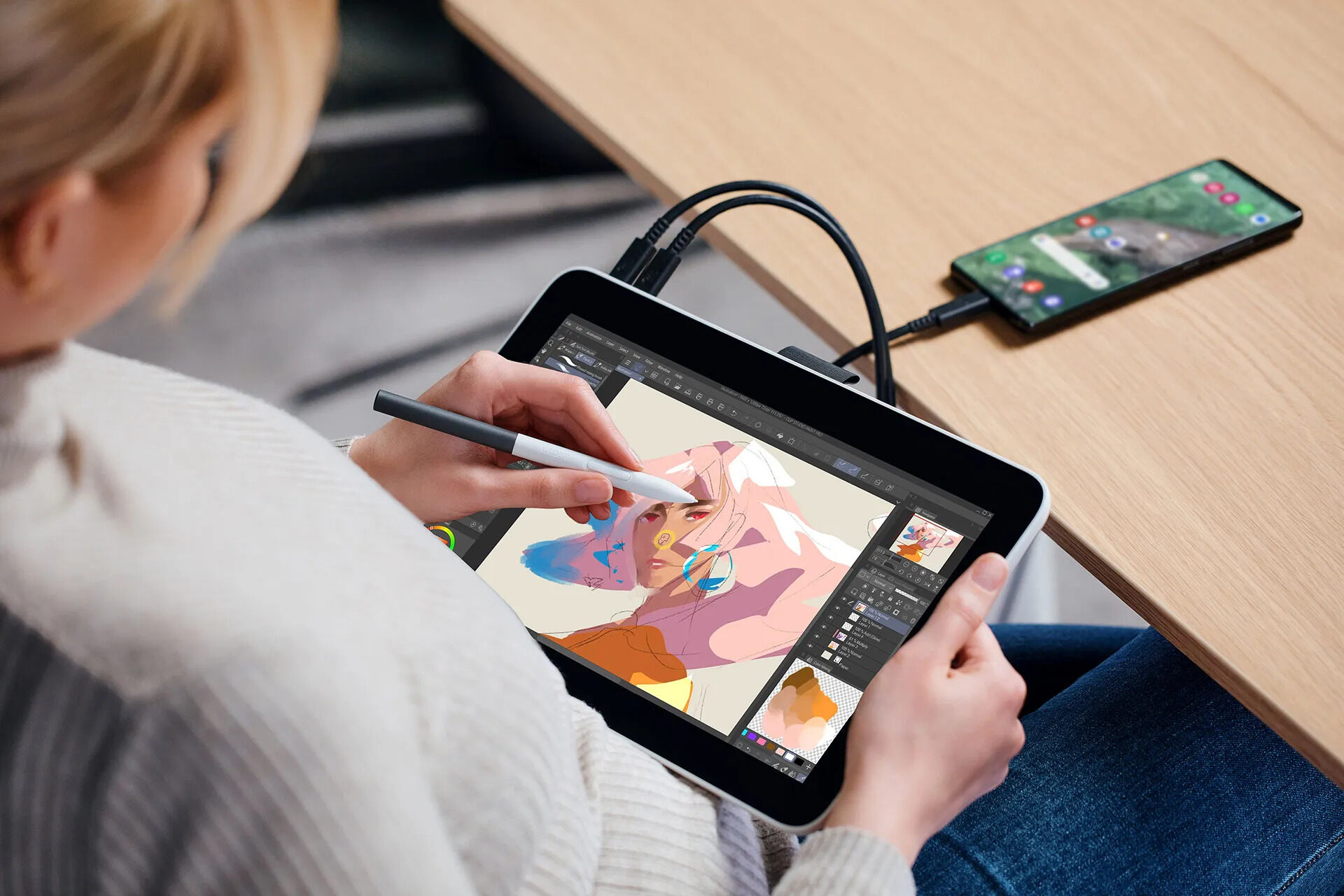Introduction
A Wacom tablet is a powerful tool used by artists, designers, and photographers to create digital artwork with precision and control. This innovative device bridges the gap between traditional analog drawing and digital art, offering a seamless and intuitive experience for professionals and hobbyists alike.
With a Wacom tablet, artists can use a stylus or pen to draw directly on the tablet’s surface, which is then translated into digital form on their computer screen. This allows for more natural and fluid strokes, providing a level of accuracy and detail that is difficult to achieve with a mouse or trackpad.
Whether you’re an illustrator looking to bring your sketches to life, a graphic designer wanting to refine your digital creations, or a photographer seeking to retouch and edit images with precision, a Wacom tablet can revolutionize your workflow and elevate the quality of your work.
In this article, we will explore the different types and features of Wacom tablets, discuss how they work, and examine the benefits of using one in your creative process. We will also provide tips and tricks for getting the most out of your Wacom tablet and highlight popular software applications that are compatible with these devices.
So, if you’re ready to take your digital artistry to the next level, grab your stylus and let’s dive into the world of Wacom tablets.
What Is a Wacom Tablet?
A Wacom tablet, also known as a graphics tablet or pen tablet, is a digital input device that allows users to draw, paint, and interact with their computer using a stylus or pen-like tool. It consists of a flat surface, typically with a pressure-sensitive screen, and a stylus that can detect and translate pen movements into digital data.
Unlike a traditional mouse or trackpad, which offer limited precision and control, a Wacom tablet provides a more natural and fluid drawing experience. The tablet’s surface is sensitive to pressure, allowing artists to apply varying degrees of pressure to create brush strokes of different thicknesses and opacity levels. This level of control makes it easier to mimic traditional drawing and painting techniques digitally.
Wacom tablets come in various sizes, ranging from small portable models to larger professional-grade tablets. The larger tablets provide more room for drawing and can be especially beneficial for artists working on detailed illustrations or large-scale projects. Smaller tablets, on the other hand, are more compact and travel-friendly, making them suitable for digital nomads or artists on the go.
One of the key features of a Wacom tablet is its ability to detect tilt and rotation of the stylus. This means that artists can hold the stylus at different angles to achieve different effects while drawing or painting. This feature adds an extra level of flexibility and creativity to the digital art process.
Additionally, many Wacom tablets come with customizable buttons and touch rings, allowing users to assign specific shortcuts or functions to these controls. This helps streamline the digital workflow by providing quick access to frequently used tools or commands, saving valuable time and improving productivity.
Overall, a Wacom tablet offers a versatile and intuitive way to create digital art. Its combination of pressure sensitivity, tilt recognition, and customizable controls make it a powerful tool for artists, designers, and photographers who want to bring their creative visions to life in a digital medium.
How Does a Wacom Tablet Work?
A Wacom tablet works by using electromagnetic resonance technology to track the movement of the stylus or pen on its surface. The tablet’s surface is embedded with a grid of wires that generate an electromagnetic field. The stylus, equipped with a coil inside, interacts with this field and sends signals back to the tablet, which are then interpreted as pen movements.
When you start using a Wacom tablet, the stylus interacts with the electromagnetic field and sends information about its position, pressure, and tilt to the tablet. The tablet accurately detects and translates these signals, allowing you to see your strokes and drawings mirrored on your computer screen in real-time.
Most Wacom tablets are pressure-sensitive, meaning they can detect the amount of force applied to the stylus. The sensitivity levels vary depending on the tablet model, but typically, the more pressure levels a tablet has, the more precise and responsive it is. This pressure sensitivity allows artists to achieve different line weights and brush strokes by varying the pressure they apply to the stylus.
Furthermore, a Wacom tablet can detect the tilt and rotation of the stylus, adding another dimension of control to the digital art experience. By tilting the stylus, artists can simulate the angle of a traditional pen or brush and achieve different effects in their artwork. This capability enhances the naturalness and versatility of working with a Wacom tablet.
Connecting a Wacom tablet to your computer is a straightforward process. Most Wacom tablets connect via USB, allowing for a fast and reliable connection. Once connected, you may need to install the necessary drivers and software provided by Wacom to ensure compatibility and optimal performance. These drivers and software packages often come with additional features and tools that can enhance your creative workflow.
It’s important to note that Wacom tablets are compatible with various operating systems, including Windows, macOS, and some Linux distributions. This wide-ranging compatibility makes Wacom tablets suitable for users across different platforms and software applications.
In summary, a Wacom tablet works by utilizing electromagnetic resonance technology to track the movement of the stylus. This technology, combined with pressure sensitivity and tilt recognition, enables users to create precise and expressive digital artwork with control and fluidity.
Benefits of Using a Wacom Tablet
Using a Wacom tablet provides a range of benefits for artists, designers, and photographers in their creative process. Let’s explore some of the advantages of using a Wacom tablet:
1. Improved Precision and Control: The pressure-sensitive and tilt recognition capabilities of a Wacom tablet allow for more accurate and natural drawing and painting. Artists can control line thickness, opacity, and brush strokes with greater precision, resulting in more detailed and refined artwork.
2. Seamless Workflow Integration: Wacom tablets are compatible with a wide range of software applications used in creative industries, including Adobe Photoshop, Illustrator, and Corel Painter. This compatibility ensures a seamless integration into your existing digital workflow, allowing for a smooth transition from traditional to digital techniques.
3. Time-Saving Shortcuts: Many Wacom tablets come equipped with customizable buttons and touch rings that can be programmed to perform specific functions or shortcuts. This feature helps streamline the creative process by providing quick access to frequently used tools or commands, saving valuable time and boosting productivity.
4. Natural Drawing Experience: Drawing directly on the tablet’s surface with a stylus provides a more intuitive and natural feel compared to using a mouse or trackpad. The hand-eye coordination involved in drawing on the tablet mimics traditional drawing techniques, allowing artists to focus on their creativity instead of navigating through menus and toolbars.
5. Versatility and Flexibility: Whether you’re an illustrator, graphic designer, or photographer, a Wacom tablet offers versatility to cater to various art styles and techniques. The ability to switch between brushes, adjust settings, and experiment with different tools provides endless creative possibilities.
6. Edit and Retouch with Precision: Photographers can benefit from a Wacom tablet’s precise control when editing and retouching images. Using the stylus, they can make precise adjustments to exposure, color, and retouching, ensuring highly accurate and professional results.
7. Portability: With the availability of compact and lightweight models, Wacom tablets offer portability, allowing artists to work on their projects wherever they go. This makes it convenient for professionals who need to work on-site or for digital nomads who want to create art while traveling.
These are just a few of the benefits artists can enjoy when using a Wacom tablet. The combination of precision, natural drawing experience, workflow integration, and versatility makes it an essential tool for anyone looking to take their digital art and design skills to new heights.
Different Types of Wacom Tablets
Wacom offers a range of tablets to suit various needs and budgets, ensuring there’s a perfect fit for every artist and designer. Let’s take a look at some of the different types of Wacom tablets available:
1. Intuos: The Intuos series is ideal for beginners and those on a budget. These tablets provide an excellent entry point into the world of digital art and offer a range of sizes to choose from. They come with a pressure-sensitive pen and can connect wirelessly to your computer, providing flexibility and convenience.
2. Intuos Pro: The Intuos Pro series is designed for professionals and serious enthusiasts. These tablets offer advanced features such as higher levels of pressure sensitivity, tilt recognition, and even multi-touch gestures. They come in a variety of sizes, from small to large, to accommodate different workflow preferences.
3. Cintiq: The Cintiq series is a premium line of Wacom tablets that combines the best features of a graphics tablet and a high-resolution display. With a Cintiq tablet, artists can directly draw on a built-in screen, providing a more natural and immersive drawing experience. These tablets are especially popular among professional artists and animators.
4. MobileStudio Pro: The MobileStudio Pro series offers a complete mobile creative solution, combining a Wacom tablet and a powerful computer in one device. These tablets feature high-resolution displays, powerful processors, and ample storage, making them ideal for artists who need flexibility and portability without compromising on performance.
5. One by Wacom: The One by Wacom series is designed for first-time users or those in need of a simple and affordable tablet. These tablets offer a pen and pressure-sensitive surface, allowing for precise drawing and control. They are available in different sizes to suit various preferences.
6. Bamboo: The Bamboo series is now discontinued but still worth mentioning. These tablets were popular for their affordability and user-friendly features. They were a great choice for beginners and hobbyists looking to explore digital art without breaking the bank.
Each type of Wacom tablet has its own unique features and suitability for different usage scenarios. It’s important to consider factors such as budget, intended use, and desired features when selecting the right tablet for your needs. Whether you’re a beginner or a seasoned professional, Wacom has a tablet to help you unleash your creativity.
Features to Consider When Buying a Wacom Tablet
When buying a Wacom tablet, it’s important to consider various features to ensure that you choose the right tablet for your artistic needs. Here are some key factors to consider:
1. Pressure Sensitivity: The pressure sensitivity of a tablet determines how accurately it can detect the amount of pressure applied to the stylus. Higher levels of pressure sensitivity provide more control and precision when drawing, allowing for thicker or thinner lines based on the applied pressure. Consider a tablet with higher pressure levels for more expressive artwork.
2. Size and Resolution: Wacom tablets come in various sizes, from small and portable to large and spacious. Consider the size that will suit your workflow and artistic style. Larger tablets provide more room for drawing, while smaller tablets are more travel-friendly. Additionally, consider the resolution of the tablet’s screen to ensure a clear and detailed display of your artwork.
3. Tilt Recognition: Tablets with tilt recognition can detect the angle at which the stylus is held. This feature allows for more natural and realistic shading and brush strokes. If you frequently use techniques that involve varying the angle of the stylus, consider a tablet with tilt recognition capabilities.
4. Multi-Touch Gestures: Some Wacom tablets offer multi-touch gestures, allowing you to use finger gestures on the tablet’s surface. This feature can be useful for zooming in or out, rotating the canvas, or navigating through menus and screens. Consider whether multi-touch gestures are important to your workflow.
5. Programmable Buttons: Many Wacom tablets come with programmable buttons or touch rings that can be customized to perform specific functions or shortcuts. These buttons provide quick access to frequently used tools, brushes, or software shortcuts, enhancing your productivity and speeding up your workflow. Consider the number and placement of programmable buttons based on your workflow preferences.
6. Connectivity Options: Consider the connectivity options available for the tablet. Some tablets connect via USB, while others offer wireless connectivity. Additionally, check if the tablet is compatible with your computer’s operating system and software applications.
7. Compatibility with Accessories: Wacom tablets often have a range of accessories that can enhance your artistic experience. These include pen stands, cases, screen protectors, and additional pens or nibs. Consider whether the tablet you are interested in has compatible accessories available to further enhance your workflow.
By taking these features into consideration, you can make an informed decision when selecting the right Wacom tablet for your artistic journey. Remember to assess your specific needs and artistic style to ensure that the tablet you choose aligns with your creative goals.
Setting Up and Configuring a Wacom Tablet
Setting up and configuring a Wacom tablet is a straightforward process. Follow these steps to get your tablet up and running:
1. Install Drivers: Before connecting your Wacom tablet to your computer, visit the official Wacom website and download the latest drivers and software for your specific tablet model. Install the drivers following the provided instructions to ensure compatibility and optimal performance.
2. Connect the Tablet: Once the drivers are installed, connect your Wacom tablet to your computer using the accompanying USB cable. Ensure that the tablet is connected securely.
3. Adjust Pen Preferences: Open the Wacom Tablet Properties or Wacom Control Panel application on your computer to configure the pen preferences. Here, you can customize the pen’s pressure sensitivity, sensitivity to tilt or rotation, and assign functions to the buttons on the stylus. Adjust these settings to match your preferred drawing style and comfort.
4. Configure ExpressKeys: Many Wacom tablets have ExpressKeys, programmable buttons located on the tablet’s surface. Use the Wacom Tablet Properties or Wacom Control Panel application to assign functions or shortcuts to these buttons. You can set them to perform various tasks like opening software applications, adjusting brush sizes, or toggling between layers.
5. Customize Touch Gestures: If your Wacom tablet supports touch gestures, configure them to your liking. Use the Wacom Tablet Properties or Wacom Control Panel application to customize gestures such as pinch-to-zoom or rotate. These gestures can help you navigate through your artwork or zoom in and out without needing to use additional tools.
6. Calibration: Some Wacom tablets require calibration to ensure accurate cursor positioning. Follow the instructions provided by the Wacom Tablet Properties or Wacom Control Panel application to calibrate your tablet, ensuring that your stylus is accurately detected on the tablet’s surface.
7. Test and Adjust: After completing the setup and configuration, test your Wacom tablet by opening your preferred drawing or painting software. Ensure that the pressure sensitivity, tilt recognition, and buttons are working as intended. If necessary, make further adjustments to the preferences based on your needs and preferences.
Remember to periodically check for driver updates on the Wacom website. Installing the latest drivers can improve compatibility, performance, and access to new features or enhancements.
With your Wacom tablet properly set up and configured, you’re ready to unleash your creativity and take full advantage of the intuitive and precise drawing experience it offers. Spend some time exploring the controls, adjusting settings, and experimenting with different brushes and techniques to unlock the full potential of your Wacom tablet.
Tips and Tricks for Using a Wacom Tablet Effectively
Using a Wacom tablet effectively can elevate your digital art and design workflow. Here are some useful tips and tricks to help you make the most out of your Wacom tablet:
1. Practice and Experiment: Familiarize yourself with the pressure sensitivity and tilt recognition of your Wacom tablet. Practice different brush strokes and techniques to understand the range of effects you can achieve. Experiment with various brushes, settings, and software tools to discover your preferred style and workflow.
2. Use Keyboard Shortcuts: Combine the use of your Wacom tablet with keyboard shortcuts to optimize your workflow. Assign frequently used shortcuts to the programmable buttons on your tablet or use the tablet’s touch ring to navigate through menus or adjust brush sizes. This allows for a more efficient and seamless creative process.
3. Customize Your Workspace: Configure your software workspace to take advantage of your tablet’s features. Set up your brush palette, layers, and toolbars to be easily accessible with your tablet and stylus. Customize the layout to match your drawing style and preferences for a smoother workflow.
4. Utilize Pressure Sensitivity: Take advantage of the pressure sensitivity of your Wacom tablet to create dynamic and varying line weights. Apply more pressure for thicker lines or softer strokes, and use lighter pressure for finer details and delicate shading. Embrace the versatility that pressure sensitivity offers in bringing your artwork to life.
5. Use ExpressKeys for Efficiency: Program the ExpressKeys on your tablet for quick access to frequently used functions or shortcuts. Assign functions like undo, zoom in and out, brush size adjustment, or switching between different layers. This eliminates the need to constantly switch between the tablet and the keyboard, enhancing your productivity.
6. Calibrate Regularly: Calibrate your Wacom tablet regularly to ensure accurate cursor positioning. This is especially important if you notice any discrepancies between your stylus movements and what appears on the screen. Calibrating the tablet helps maintain precise and accurate drawing and avoids any misalignment issues.
7. Explore Custom Brushes and Presets: Many software applications allow you to create or download custom brushes and presets. Experiment with different brush types, textures, and effects to give your artwork a unique look. Customize these brushes to suit your artistic style and explore the possibilities they offer on your Wacom tablet.
8. Take Advantage of Tilt Recognition: If your tablet has tilt recognition, experiment with using different angles to achieve diverse shading and texturing effects. Utilize the stylus tilt to simulate the angle of a traditional pen or brush, giving your artwork depth and realism.
9. Regular Maintenance: Keep your Wacom tablet clean and in good working condition. Clean the tablet’s surface and stylus regularly using a soft cloth or Wacom-approved cleaning solution. Check for firmware and driver updates periodically to ensure optimal performance and compatibility with your computer.
10. Practice Ergonomics: Pay attention to your posture and ergonomics while using a Wacom tablet. Make sure you have a comfortable chair, a well-positioned desk, and proper lighting. Use a tablet stand if necessary to achieve a comfortable drawing angle. Taking care of your physical well-being will contribute to a more enjoyable and productive creative experience.
By implementing these tips and tricks, you can enhance your creative process and make the most out of your Wacom tablet. Cultivate your skills, explore the possibilities, and unleash your creativity with the precision and control that a Wacom tablet offers.
Popular Software Applications Compatible with Wacom Tablets
Wacom tablets are compatible with a wide range of software applications used in various creative fields. Here are some popular software applications that work seamlessly with Wacom tablets:
1. Adobe Photoshop: Adobe Photoshop is a leading image editing and manipulation software used by photographers, illustrators, and designers. With a Wacom tablet, you can take advantage of Photoshop’s extensive brush library, precise selection tools, and pressure sensitivity to create realistic and detailed digital artwork.
2. Adobe Illustrator: Adobe Illustrator is a versatile vector graphics software used for creating illustrations, logos, and scalable graphics. When paired with a Wacom tablet, Illustrator allows for precise control over anchor points, path drawing, and shaping tools, enabling smooth and accurate digital illustration.
3. Corel Painter: Corel Painter is a powerful digital painting software that simulates the look and feel of traditional brushes, paints, and canvases. Through the use of Wacom tablets, artists can have a more realistic and immersive painting experience, applying brushstrokes with precision, and achieving lifelike textures and blending effects.
4. Autodesk SketchBook: Autodesk SketchBook is a digital sketching and drawing software that offers a wide range of brushes and tools. With a Wacom tablet, SketchBook enables artists to create expressive and detailed sketches, from rough concepts to polished illustrations, using the tablet’s pressure sensitivity and tilt recognition features.
5. Clip Studio Paint: Clip Studio Paint is a popular software application among manga and comic artists. It offers specialized drawing and painting tools, as well as features for creating comic panels and page layouts. When used with a Wacom tablet, Clip Studio Paint provides a natural and intuitive drawing experience for creating professional-quality artwork.
6. ZBrush: ZBrush is a digital sculpting software widely used in the film, gaming, and digital art industries. With a Wacom tablet, artists can sculpt and manipulate virtual 3D models using pressure sensitivity and stylus control, allowing for intricate detailing and precise shaping of virtual sculptures.
7. Adobe Lightroom: Adobe Lightroom is a powerful photo editing and organization software commonly used by photographers. With a Wacom tablet, photographers can make precise adjustments to exposure, contrast, and color, as well as perform detailed retouching tasks with accuracy and control.
8. Procreate: Procreate is a popular digital painting app designed exclusively for iPad users. When combined with a compatible Wacom tablet, iPad users can access Procreate’s extensive brush library and powerful drawing tools, enabling them to create stunning digital artwork on the go.
9. Affinity Designer: Affinity Designer is a vector graphics software that offers a wide range of professional-grade tools for designing illustrations, logos, and more. When used with a Wacom tablet, the precision and control provided by the tablet’s stylus enhance the design process, making it easier to create intricate and precise vector artwork.
10. Krita: Krita is a free and open-source digital painting software that caters to artists of all levels. When paired with a Wacom tablet, artists can enjoy a natural and responsive drawing experience with a variety of brushes and customization options, making it a popular choice for digital painters.
These are just a few examples of the software applications that are compatible with Wacom tablets. The versatility of Wacom tablets ensures that artists, designers, and photographers can find a software solution that suits their specific field and creative needs.
Conclusion
With its precise control and intuitive drawing experience, a Wacom tablet has become an indispensable tool for artists, designers, and photographers in the digital age. The pressure sensitivity, tilt recognition, and customizable features of Wacom tablets provide a seamless transition from traditional art techniques to the digital medium.
Throughout this article, we have explored the various aspects of Wacom tablets, from understanding their functionality and benefits to choosing the right tablet for your needs. We also discussed tips and tricks for maximizing your productivity and creativity with a Wacom tablet and highlighted popular software applications that are compatible with these devices.
By harnessing the power of a Wacom tablet, artists can create digital artwork that possesses the precision and artistry of traditional mediums while capitalizing on the advantages of digital technology. Whether you’re a professional artist, a hobbyist, or a photographer, a Wacom tablet can enhance your creative process and elevate the quality of your work.
Remember, practice and experimentation are key to mastering the use of a Wacom tablet. Spend time exploring the features, honing your skills, and discovering new techniques to truly unlock the potential of your artistic expression.
Investing in a Wacom tablet is an investment in your creativity and artistic development. It opens up a world of possibilities, allowing you to explore new art styles, experiment with different brushes and tools, and unleash your imagination in the digital realm.
So, whether you’re a digital artist looking for more control and precision, a designer wanting to streamline your workflow, or a photographer aiming for fine-tuned edits, a Wacom tablet is your artistic companion on this journey of creativity and self-expression.
Embrace the power of a Wacom tablet, and let your imagination soar as you create unique and stunning digital artwork that reflects your artistic vision and passion.







